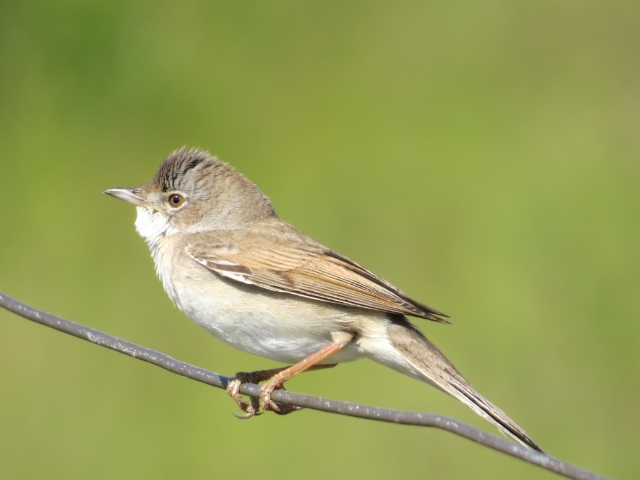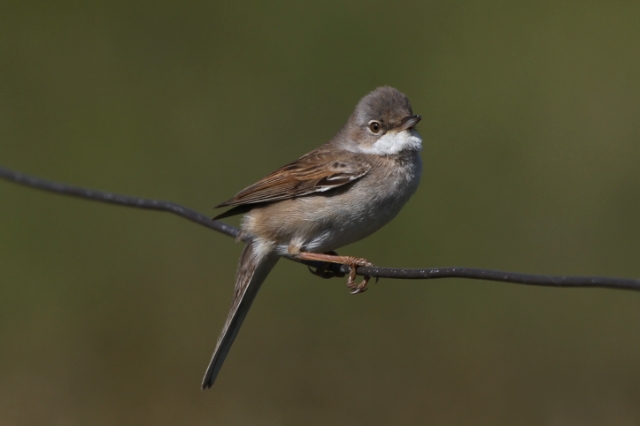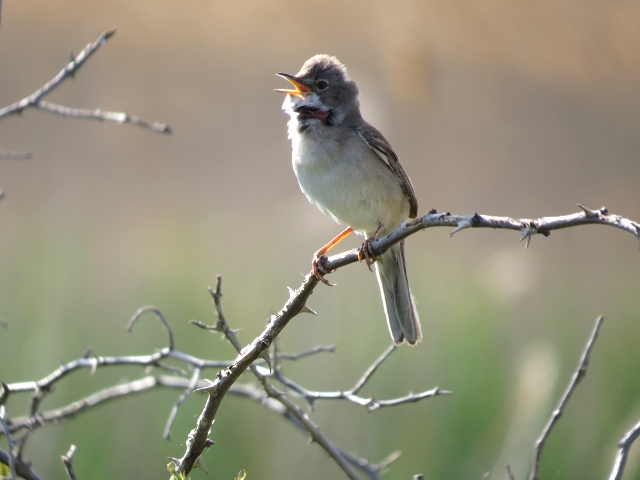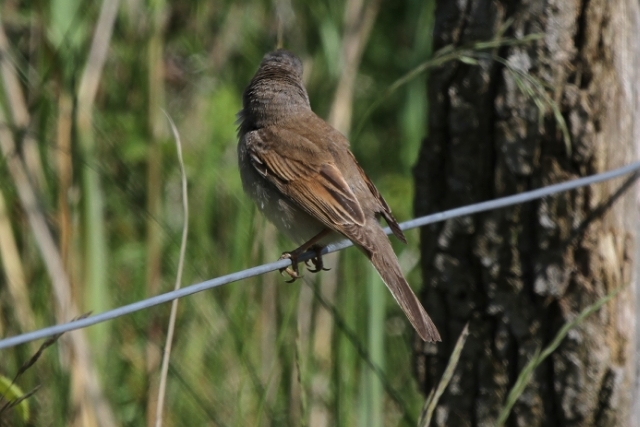order: Passeriformes family: Sylviidae




Description
Length 13-15cm, mass: 16 g.
A sturdy and large-headed warbler with a fairly long white-sided tail.The mantle, back and scapulars are a rather drab brown. The legs and the base of the lower mandible are pale, varying from yellowy through flesh to horn.
This is one of several Sylvia species that has distinct male and female plumages.
The male has a greyish head, a white orbital ring and a grey-brown back, and in all plumages shows broad bright rufous margins to the secondaries, tertials and wing coverts. The underparts are whitish, with pure white on the throat contrasting with a pink flush on the breast.
The female is browner, washed buff on the breast, with a brown head, pale orbital eyering and pale brown eye.
call
Quite vocal, with a range of call notes, such as a nervous, nasal "dverhr dverhr dverhr" and a low "dzhuurrr", a lively "whit-whit-whit" which often precedes song, and a sharp, often repeated "tak". The song is a brisk and lively warble, quite shrill and scratchy and delivered from a raised perch, or a little longer, richer and more fluid when given in a jerky little song flight. In its simplest version it is just 1-1.5 seconds long, with 6-12 note components, such as an easy-to-remember "witchetty-witchetty-witchetty-witch!" or more accurately as "weech'u-cheh'weh-i'chu-chi'chiih!", often slightly descending through the sequence and ascending sometimes on the final two or three notes. Longer and more complex versions can last up to 10 seconds or more, and sound more warbling and similar to other Sylvia species.http://www.xeno-canto.org/species/Sylvia-communis
Distribution and habitat
Its breeding grounds are from western Europe to north-west Africa and Mongolia; in the non-breeding season it heads south to sub-Saharan Africa, occurring in a band from Senegal to Ethiopia south to southern Africa. Here its distribution is centered around Botswana, extending into Zimbabwe, northern South Africa and north-eastern Namibia. It generally prefers arid woodland with scattered Acacia trees, or with miombo (Brachystegia) and Zambezi teak (Baikiaea plurijuga), especially with undergrowth containing fruit-bearing shrubs.
Movements and migrations
It mainly arrives in southern Africa from late November-December, departing from March-April.
Breeding
The nest is built always near the ground in bushes, thickets of nettle or wormwood. Like all warblers, they construct their nest as a woven "bowl". On the top edge of the nest, there is a border made of white lumps of vegetative fluff. Walls are not dense; they are made mainly of last year’s blades. A lining inside the nest often contains mammals’ hair.
3-7 eggs are laid.
Diet
It eats a variety of insects and fruit, often foraging solitarily but also joining mixed-species foraging flocks.
Threats
Not threatened.
links:
http://en.wikipedia.org/wiki/Common_whitethroat
http://www.biodiversityexplorer.org/bir ... mmunis.htm


